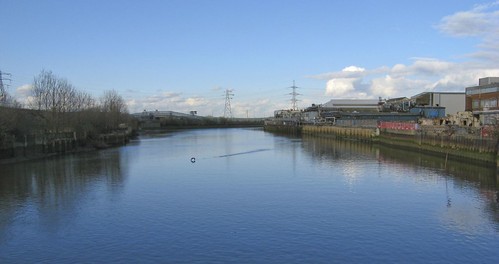Remaking the Bow Back Rivers: environmental and social intervention to decrease flooding and unemployment in West Ham, 1905-1935


Promotional literature for the 2012 Olympic games promises to transform the environmental and social conditions in the Lower Lea Valley: “The natural river system of the valley will be restored, canals would be dredged and waterways widened… The rehabilitation of the Lower Lea Valley lies at the heart of the Olympic legacy to east London, restoring an eco-system and revitalising an entire community.”[1] This, however, is not the first time the Bow Back Rivers have been the focus of a major public works project with the goals of improving social and environmental conditions in West Ham. Half a century of rapid industrial and suburban growth left the tidal Back Rivers of the Lower Lea in rough condition by the end of the nineteenth century. The polluted and silted streams decreased the rivers utility for transportation, threatened public health, and increased the threat of flooding.
In 1908, three years after West Ham drew national attention for its high levels of unemployment, the borough engineer saw an opportunity to solve two problems with one project. The unemployment crisis during the winter of 1905 forced the Local Government Board to increase its intervention in the labour market by funding make work projects. The borough engineer saw this as an opportunity to finally address the long standing problem of the degraded Back Rivers. Unfortunately for the rivers, and the people who worked and lived near them, negotiations between West Ham and the Lee Conservancy Board [LCB] broke down in January 1909, as neither body wanted to assume liability for managing the project. As a result, the Back Rivers remained a problem, until the aftermath of a major flood in 1928, and the economic collapse of 1929 finally allowed West Ham and the LCB to work together and re-make the Back Rivers through a major public works project. As the Olympic development “re-naturalises” the concrete banks of the City Mill and Waterworks rivers it is worthwhile remembering that these canals embody the history of a public works project intended to revitalise the economy and environment in West Ham during the early twentieth century.
I will be in London at the Centre for Metropolitan History giving a talk on this topic on Wednesday the 24 February at 4:30 pm. Pollard Room, First Floor, Institute of Historical Research, Senate House, Malet Street, London WC1E
[1] http://environment.london-2012.co.uk/Lower-Lea-Valley/ (Accessed February 2007) For a more recent account of the progress in transforming the Lower Lea see: http://www.london2012.com/games/olympic-park/index.php

Peter Kay
In case it is of any interest as a side factor in your research, I have done a very detailed study of the infrastructural development of the main railway line between Bethnal Green and Ilford, from 1830s to 1930s.